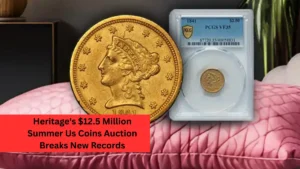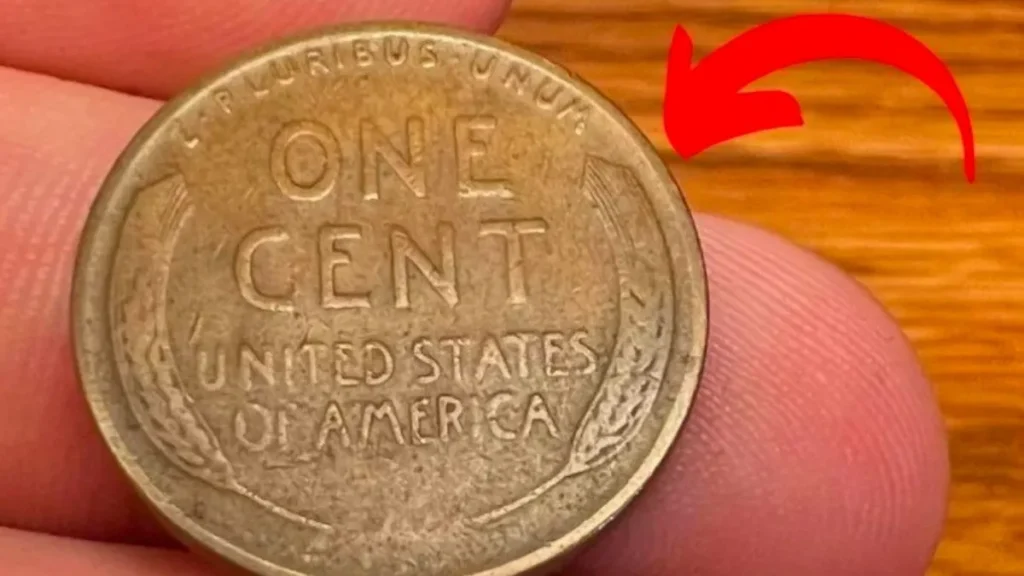More than 40 bids were placed for a highly sought-after rare coin, one of only 15 known to exist, eventually reaching $150,000 USD. This top bid led Heritage Auctions’ Long Beach/Summer FUN US Coins Signature Auction to a total of $12,546,757 from July 20-23.
This event was notable as it marked the first time in 45 years that the 1841 quarter eagle graded VF35 by PCGS, struck from the JD-1 dies and classified as High R.6, appeared at auction. The coin was affectionately dubbed the “Little Princess” by numismatist Norman Stack during a 1954 Davis-Graves auction, a nickname that has stuck ever since.
Todd Imhof, Executive Vice President of Heritage Auctions, commented, “This is a remarkable result for a truly exceptional coin. After former Mint Director James Ross Snowden mentioned the 1841 quarter eagle in his 1860 report on the Mint Cabinet, numismatic writer Edgar Adams revealed knowing of only two examples, which helped fuel strong interest and demand.”
The 1841 quarter eagle was closely followed by an 1874 Three Dollar, PR66 Cameo, which sold for $144,000. This coin has one of the lowest Proof mintages from the era of publicly sold Proof coins; only 20 were produced, and today it’s estimated that just 12 to 14 survive, according to expert John Dannreuther. This coin tops Dannreuther’s list of Significant Examples and holds the highest grades at PCGS (Cameo category) and CAC, while no NGC-certified coin has achieved as high a grade.
A third coin to surpass six figures was an 1873 Liberty Eagle, Closed 3, MS61, which matched the finest certified grade and sold for $102,000, surpassing its previous record of $78,000 set at Heritage Auctions in October 2022. The 1873 Liberty Eagle is considered one of the rarest in the series, with high-grade specimens extremely scarce. Only three have been certified in Mint State by PCGS and NGC combined; this example and an MS61 certified by NGC share the finest status.
A 1799 Capped Bust Right Eagle, MS64, closed at $99,000. This coin, favored by early collectors, is from the BD-10 variety, featuring Large Stars on the obverse and a leaf touching the foot of the “I” in “AMERICA.” It is estimated that only 300-400 of these coins still exist.
Competitive bidding pushed three coins—an 1878 Three Dollar, PR65 Deep Cameo, a 1927-D Peace dollar, MS66+, and an 1864 quarter eagle, MS60—to $93,000 each. The 1878 Three Dollar is among just 20 Proof coins made, despite over 82,000 struck for circulation, anticipating increased demand for gold. Only 12 to 14 Proof examples remain today, according to Dannreuther. The 1927-D Peace dollar is among the finest known, with very few surviving. The 1864 quarter eagle is one of the rarest Liberty Head series circulation strikes and extremely scarce in Mint State, with fewer than 24 examples known in all grades, and only four certified Mint State coins.
Two coins sold for $90,000 each: an 1879 Three Dollar Gold, PR65+, and a 1929 half eagle, MS65. The 1879 Three Dollar Gold, which broke its previous record of $84,000 from last year’s Heritage sale, had a tiny mintage of just 30 Proof coins for collectors that year. Dannreuther estimates that no more than 14 to 18 examples remain in all grades.
This coin was once a prized piece in Walter H. Childs’s collection, who purchased it along with numerous other 19th-century Proof coins directly from the Philadelphia Mint. The 1929 half eagle attracted 36 bids and was once a highlight of Jim O’Neal’s famous collection. It is the rarest issue across all grades in the entire Indian Head series. Many coins from the original mintage were never released, and surviving examples mostly come from collector purchases at the time or local bank orders. Many of these coins have been preserved in collections, so most surviving examples are found in lower Mint State grades, with only a few circulated coins known.
FAQs
Q1: What makes the 1841 quarter eagle “Little Princess” so special?
A1: It’s one of only 15 known examples, struck from rare JD-1 dies, and has a unique nickname given by a numismatist in 1954, making it highly collectible.
Q2: Why are Proof coins like the 1874 Three Dollar so valuable?
A2: Proof coins had very limited mintages, often fewer than 20, and many have been lost over time, so surviving examples are extremely rare and sought after.
Q3: How rare is the 1873 Liberty Eagle, Closed 3?
A3: It is one of the rarest coins in the series with only three Mint State certified specimens known, making it highly prized among collectors.
Q4: What affects the value of coins like the 1929 half eagle?
A4: Its rarity, limited original release, and preservation in collections mostly in lower Mint State grades make it exceptionally valuable to collectors.



